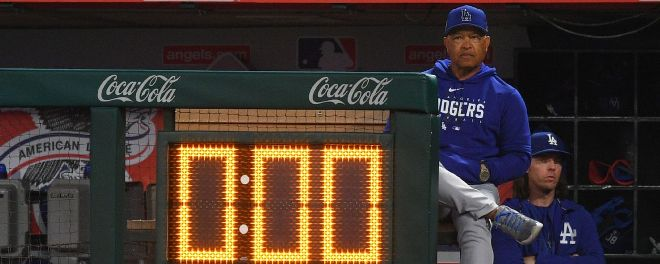A Big Change in the MLB
March 29, 2023
Major League Baseball (MLB) recently introduced a new rule for the 2022 season: the pitch clock. This new rule requires pitchers to deliver the ball within a set amount of time, with the goal of reducing the overall length of games.
The pitch clock works by displaying a timer on the scoreboard, counting down from 20 seconds when there are no runners on base and 30 seconds when there are runners on base. If the pitcher fails to deliver the pitch before the timer reaches zero, a ball is added to the count.
While some fans and players have expressed concern that the pitch clock will rush pitchers and disrupt the natural flow of the game, proponents argue that it will make games more exciting by reducing the amount of downtime between pitches.
In fact, the implementation of the pitch clock has already shown positive results in the minor leagues, where it has been in use since 2015. According to MLB statistics, games in the Triple-A league were shortened by an average of 16 minutes, with a 15% reduction in the number of pitches thrown per game.
“Games were taking forever,” Angels star pitcher Brant Davidson said. “I was used to the fast pace. Every night, you’re home at 10. There was too much dead time. I found myself looking around and wondering what we were doing”.
The pitch clock is just one of several measures that MLB has implemented to speed up games in recent years. Other changes include limiting the number of mound visits and reducing the time between innings.
“I know as players, that’s something that MLB is trying to negotiate. I don’t think there’s negotiation here. As players, it just shouldn’t be in the game. Having a pitch clock, if you have ball-strike implications, that’s messing with the fabric of the game. There’s no clock in baseball, and there’s no clock in baseball for a reason.” Nationals Pitcher Max Scherzer
While the pitch clock may take some getting used to, it has the potential to improve the overall experience of watching a baseball game. By reducing the amount of downtime between pitches, it may make games more engaging for fans and even attract new ones who find the pace of traditional baseball too slow.
Overall, the pitch clock is a promising development for the MLB and the sport of baseball as a whole. By balancing the need to keep games moving with the integrity of the game itself, it may help to usher in a new era of excitement and accessibility for one of America’s most beloved pastimes.


